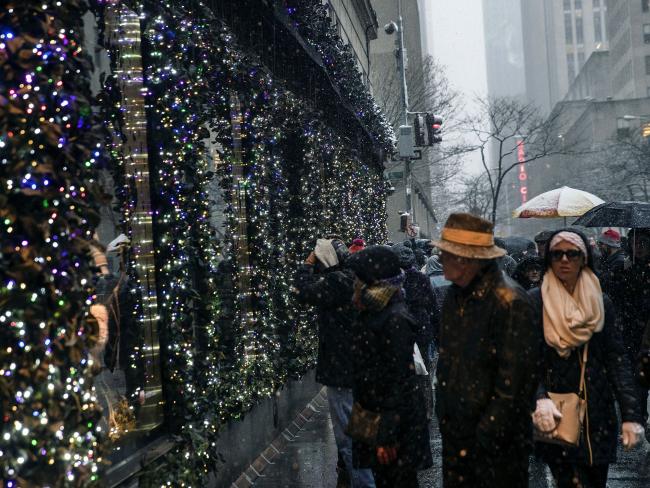(Bloomberg) -- Americans’ spending picked up in November and income gains topped projections, offering hope for a solid holiday-shopping season and indicating household consumption will continue to be the economy’s main driver at year-end.
Purchases, which account for about two-thirds of the economy, rose 0.3% from the prior month after adjusting for inflation, following a 0.1% increase in October, Commerce Department data showed Friday. That exceeded the median estimate in a Bloomberg survey of economists, while the nominal spending gain of 0.4% matched forecasts.
Consumers have carried the economy in 2019 amid fluctuations in trade policy, weakness in manufacturing and a pullback in business investment. While spending may still cool from robust gains in the previous two quarters, the figures suggest Americans can continue to fuel the record-long expansion next year amid a strong job market.
A separate report Friday from the University of Michigan showed consumer sentiment in December increased for a fourth month to the highest level since May, though was little changed from the preliminary reading.
Nominal personal income rose 0.5% in November from the prior month, exceeding the median estimate for a 0.3% gain, with wages and salaries advancing a healthy 0.4%. Inflation-adjusted disposable income rose 0.4% following a 0.2% drop in October, while the personal saving rate rose to 7.9%.
The gain in November spending was driven by new motor vehicles and health care, according to the report. The figures indicate consumption is stabilizing following softer-than-expected retail sales across some categories earlier this month.
Muted Inflation
Inflation remained short, though, of the Federal Reserve’s goal despite three interest-rate cuts this year. The personal consumption expenditures price gauge, which the Fed officially targets for 2% inflation, rose 0.2% from the prior month and 1.5% from a year earlier, with the annual change slightly above projections.
The core PCE price index, which excludes food and energy, increased at a 1.3% annualized rate over the past three months, though the 1.6% rise from a year earlier was above forecasts. Policy makers view the core gauge as a better indicator of underlying price trends and have said they’re also aiming for it to rise 2%.
The University of Michigan survey showed U.S. consumer expectations for inflation over the longer term fell to the lowest on record at 2.2%.
A separate Commerce Department report out earlier Friday showed Americans’ spending grew by more than previously reported in the third quarter, a change offset by a drag in inventories that left economic growth at a still-healthy but unrevised 2.1%.
(Adds consumer sentiment in fourth paragraph, adds chart)
